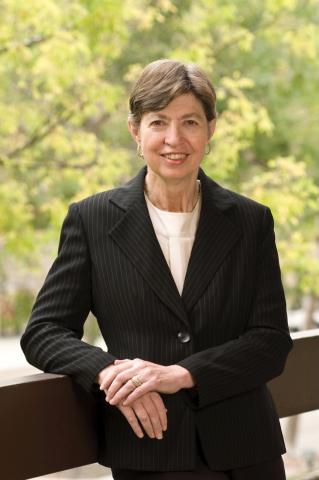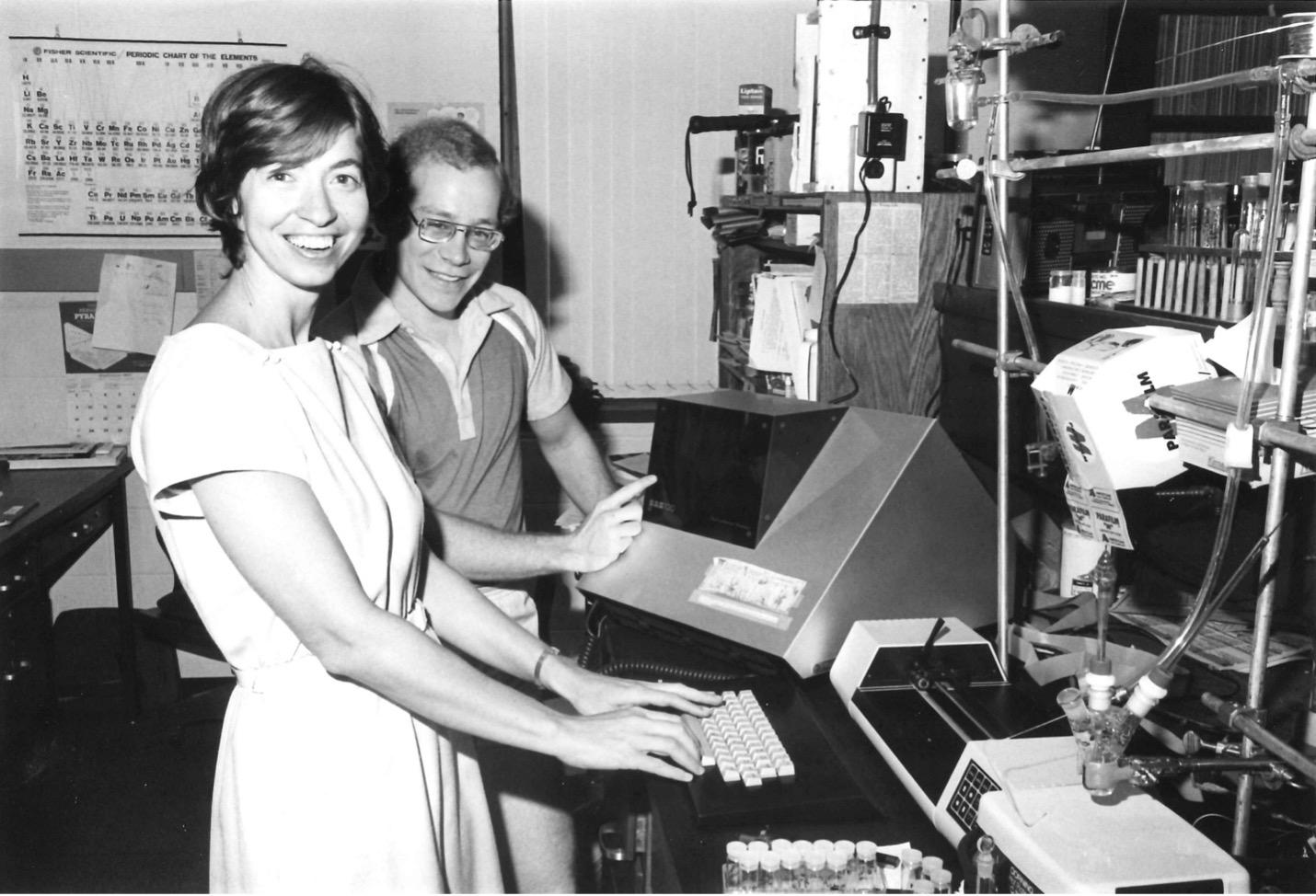As we kick off Women’s History Month, we remember the “towering force in science and a globally recognized organic photochemist and electrochemist,” who established the first Office of the Vice President for Research at The University of Texas at Austin in 1994.

Marye Anne Fox was a trailblazer and chemistry professor who broke glass ceilings as a matter of routine. She also made significant contributions to organic photochemistry and electrochemistry research that resulted in real-world applications for materials science, solar energy and environmental chemistry.
Fox was comfortable in the lecture hall, the lab and in the highest administrative positions in higher education. Her students loved and respected her. As a researcher she produced hundreds of publications and made significant discoveries. And, according to one of her colleagues, as one of only a handful of women in powerful academic positions at the time, Fox helped pave the way for greater gender equality. She was ambitious, remarkably intelligent and, perhaps most importantly, driven by a strong desire to affect real change in higher education.
Ma Fox: The Educator
Known affectionately by her students as ‘Ma Fox,’ Marye Anne took an interdisciplinary approach to education. And, according to former UT graduate student David Shultz (now faculty at North Carolina State University), this proved very useful for her mentees in their future careers.
“I remember Marye Anne as a chemistry dynamo and an effective leader,” he said. “She ran a scientifically diverse group that facilitated cross-disciplinary research and exchange of ideas. She was insistent that her students learn a number of different techniques and areas to better prepare them for scientific life after graduate studies… Marye Anne provided just the right amount of guidance and encouragement to help me become an independent researcher.”

Fox the Innovator
As a researcher Fox produced well over 400 peer-reviewed papers in several different fields of chemistry. Her expertise was vast and included everything from electrochemistry and environmental chemistry to materials science and solar energy.
Even after officially retiring at age 65, her chemical romance didn’t end and she continued working in the lab. By then her focus was on aggregated systems and chemical-based devices relevant to light harvesting – the study of materials and molecules that capture photons of solar light.
“Marye Anne Fox was a towering force in science, a globally recognized organic photochemist and electrochemist, an inspiring teacher and mentor, and a skilled administrator whose service to the academic community was nearly without peer,” said Jonathan Sessler, a chemistry professor at UT Austin and author of Marye Anne Fox: Biographical Memoirs of the National Academy of Sciences (2024).
Vice President Fox: The Leader
As UT’s inaugural Vice President for Research, Fox was charged with establishing a brand new office in 1994. According to James Whitesell, Fox’s husband and a UT chemistry professor at the time, Fox focused on making the office researcher-centric and brought people on board to provide guidance and support to researchers to help ensure their research proposals were successful. She also streamlined funding and support processes, finding efficiencies and reducing bureaucratic excess.
“She put the academic researcher at the heart of the process,” Whitesell said. “In a very short period of time, she was able to establish an office that not only supported research endeavors but actively nurtured and encouraged faculty engaging in research with impact at UT Austin.”
The same year she was appointed Vice President for Research, Fox was elected to the National Academy of Sciences, at a time when only about 5 percent of members were women.
She was also an important contributor to the Houston-based Robert A. Welch Foundation, where she served on its Science Advisory Board from 1998-2017.
“Marye Anne was always energetic, engaged, knowledgeable, and an effective leader while serving,” said Carla Atmar, Director of Grant Programs at Welch Foundation. “Her experiences in research and administration gave her a unique perspective on issues discussed by the Welch Foundation’s Science Advisory Board and she offered expertise easily.”
Life After UT
Even after her decorated career at UT Austin, Fox was only getting started. Upon leaving the Forty Acres, she became the first female Chancellor of North Carolina State University, followed by another chancellor’s post at the University of California, San Diego. And, throughout her rise in the administrative ranks of academia, she maintained a robust research practice, continuing to lead studies and run labs.
In 2010, President Barack Obama awarded Fox the National Medal of Science, the highest honor given by the U.S. government to scientists, engineers and inventors. She received honorary degrees from 12 institutions in the U.S. and abroad.
Taken Too Soon
Marye Anne passed away in May, 2021. She was survived by her husband; sons Robert, Michael and Matthew; stepsons Chris and Robert; 13 grandchildren; and two great-grandchildren.
“Marye Anne was an intellectual force whose life impacted so many, not only at UT Austin but on both the national and international stages,” said UT Chemistry Professor Stephen Martin.
“She will long be remembered for her many outstanding contributions to education and research and her example of breaking glass ceilings for women in science and academics. Her legacy will live on through the many lives she touched.”
Special thanks to UT Professor Jonathan Sessler for sharing his biographical memoir of Marye Anne Fox, a document commissioned by the National Academy of Sciences and without which the above article would not have been possible.

